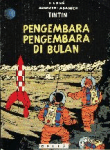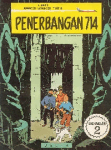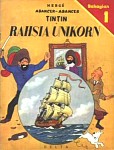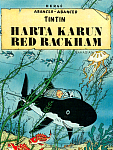| TINTIN LANGUAGES | |
| AFRIKAANS | |
| ALGUERES | |
| ALSATIAN | |
| ARABIC | |
| ASTURIAN | |
| BASQUE | |
| BERNESE | |
| BENGALI | |
| BRETON | |
| BULGARE | |
| CAMBODIAN | |
| CATALAN | |
| CHINESE | |
| CORSICAN | |
| CZECH | |
| DANISH | |
| DUTCH | |
| ENGLISH | |
| ESPERANTO | |
| FARSI | |
| FAEROESE | |
| FINNISH | |
| FRENCH | |
| FRIESIAN | |
| GALICIAN | |
| GALLO | |
| GAUMIAN | |
| GERMAN | |
| GREEK | |
| HEBREW | |
| HUNGARIAN | |
| ICELANDIC | |
| INDONESIAN | |
| ITALIAN | |
| JAPANESE | |
| KOREAN | |
| LATIN | |
| LUXEMBOURGER | |
| MALAYALAM | |
| NORWEGIAN | |
| OCCITAN | |
| PICARDY | |
| POLISH | |
| PORTUGUESE | |
| ROMANSCH | |
| RUSSIAN | |
| SERBO-CROAT | |
| SINHALESE | |
| SLOVAK | |
| SPANISH | |
| SWEDISH | |
| TAHITIAN | |
| TAIWANESE | |
| THAI | |
| TIBETAN | |
| TURKISH | |
| VIETNAMESE | |
| WELSH | |
| TOTAL 60 VERIFIED LANGUAGES | |
| RUMOURS | |
| MIRANDES | |
|
MONEGASCO |
|
| PROVENÇAL | |
| RUANDES | |
| MONEGASCO | |
| LINKS | CRAB MENÚ | CASTAFIORE MENU |
|
|
MALAY | |||||||||||
(Austronesian) |
||||||||||||
|
||||||||||||
Malay is spoken principally in Malaysia and, to a lesser extent, in neighboring Thailand and Singapore. Before 1945 its speakers extended through much of the Indonesian archipelago, but with the establishment of the Republic of Indonesia the Malay of that country was designated Indonesian. In Malaysia it is the mother tongue of about 10 million people, or about half the total population. Speakers in Thailand number one million, in Singapore 250,000.Malay is a member of the MaIay-Polynesian family of languages Beginning in the 14th century, with the conversion of many Malays to Islam, a variation of the Arabic script known as Jawi was used for writing. In the 19th century the British constructed a Roman-based alphabet that is in general use today. It differs slightly from the one used in Indonesia, which was developed by the Dutch, but the resulting variations in spelling are in fact the only difference between the two languages. A few examples of these differences may be found in the article on Indonesian. Grammatical concepts in Malay differ radically from those in Western languages. Prefixes and suffixes as we use them are virtually absent, their functions being assumed by additional words. The plural of a noun is most commonly indicated by simply saying it twice, as in rumah-rumah in the passage below, which means "houses." After numbers, however, the noun reverts to the singular and an additional word is added, similar to the English construction "seven head of cattle." Malay has many of these "numerical coefficients"—one for people (orang—man), one for animals (ekor—tail), and others for flowers, jewels, threads, and even fishing nets. "Two cats" in Malay is dua ekor kuching ("two-tail-cat"), while "two children" is budak dua orang ("child-two-man").
Malay contains many words of Sanskrit and Arabic origin. English words of Malay origin include orangutan, gingham, sarong, bamboo, rattan, kapok, paddy, and amok.
|
PUBLISHER SHARIKAT UNITED Pulau Pinag DELTA |
|
MALAY |
INDONESIAN |
FRENCH |
|
Pulau Hitam |
Rahasia pulau hitam |
L'Île noire |
|
Rahsia Unikorn |
Rahasia
kapal Unicorn |
Le Secret de la Licorne
|
|
Harta Karun Red Rackham |
Harta Karun Rackham Merah
|
Le Tresor de Rackham Le Rouge
|
|
Penerbangan 714 |
Penerbangan 714 |
Vol
714 pour Sydney |
|
Korban-Korban Matahari |
Tawanan
dewa matahari |
Le Temple du soleil
|
|
Tujuh
biji bola kaca |
Tujuh
bola ajaib |
Les 7 boules de cristal
|
|
Ketam
dengan sepit emas |
Kepiting bercapit emas |
Le Crabe aux pinces d'or
|
|
Destinasi bulan |
Ekspedisi
di bulan |
Objetif
Lune |
|
Pengembara di bulan |
Penjelajahan di bulan |
On
a marché sur la Lune |
|
LINKS
|





|
|
I'VE GOT THIS ONE | ! WANTED! |

